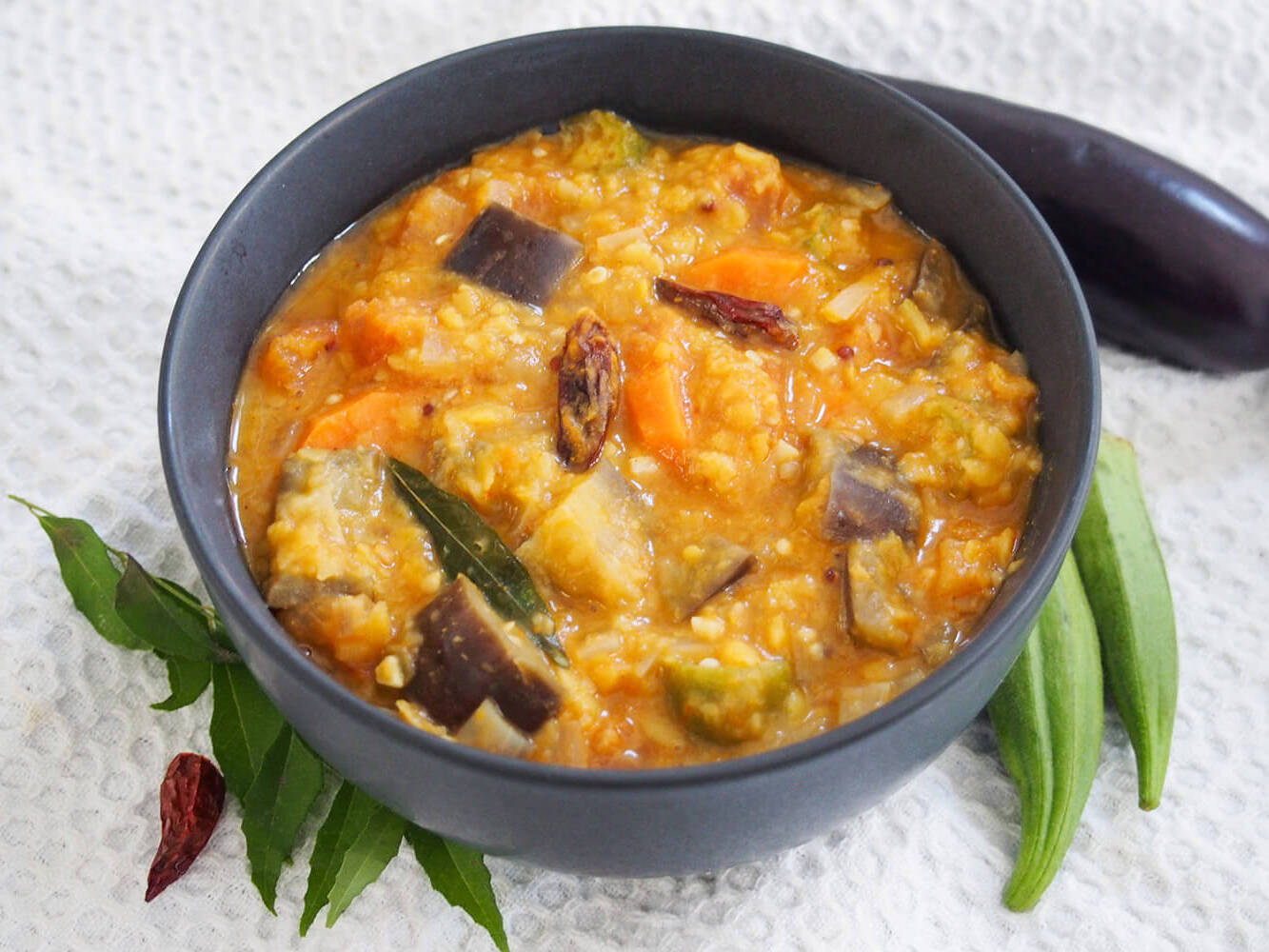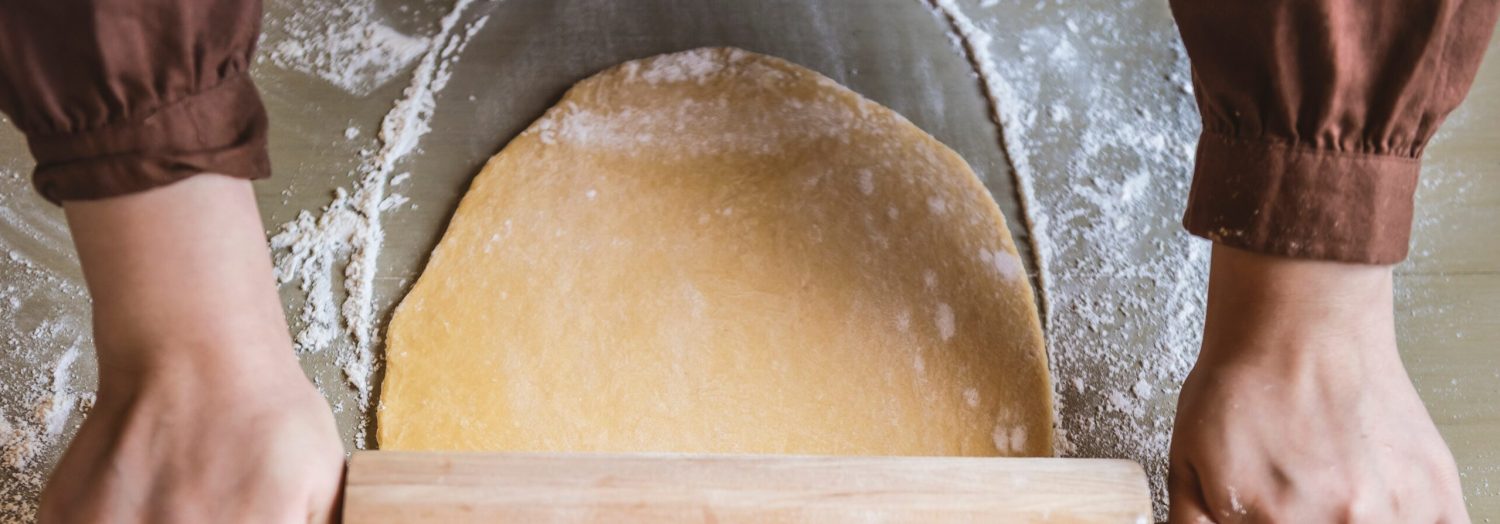Sambar is a quintessential South Indian dish that combines the goodness of toor dal and a medley of vegetables simmered in a tangy tamarind paste and spiced with aromatic sambar powder. This hearty and nutritious curry is perfect for pairing with rice or traditional Indian breads.
Some ingredients in this recipe might not be commonly found in every household. Toor dal is a type of yellow pigeon peas, essential for the base of the sambar. Tamarind paste adds a unique tangy flavor and can be found in the international aisle of most supermarkets. Sambar powder is a special spice blend used in South Indian cuisine, and asafoetida is a pungent spice that adds depth to the dish. Make sure to check the spice section for these.

Ingredients For Sambar Spicy Indian Curry Recipe
Toor dal: Yellow pigeon peas, essential for the base of the sambar.
Mixed vegetables: A combination of carrot, beans, and potato, adding texture and nutrition.
Tamarind paste: Provides a tangy flavor, commonly used in South Indian dishes.
Sambar powder: A special spice blend that gives sambar its distinctive taste.
Turmeric powder: Adds color and a subtle earthy flavor.
Oil: Used for sautéing the spices and vegetables.
Mustard seeds: Adds a nutty flavor and is used for tempering.
Cumin seeds: Adds a warm, earthy flavor to the dish.
Dried red chilies: Adds heat and depth to the sambar.
Curry leaves: Imparts a distinct aroma and flavor.
Asafoetida: A pungent spice that enhances the overall flavor.
Salt: Enhances the taste of the dish.
Coriander leaves: Used for garnishing, adds freshness and color.
Technique Tip for This Indian Curry
When preparing toor dal, ensure you rinse it thoroughly under running water to remove any impurities. Cooking it in a pressure cooker not only speeds up the process but also ensures the dal becomes soft and mushy, which is essential for a creamy sambar. For the tamarind paste, soak a small ball of tamarind in warm water for about 10 minutes and then extract the juice, discarding the pulp. This fresh tamarind extract can enhance the flavor of your sambar significantly compared to store-bought paste. When sautéing the spices, make sure the oil is hot enough to crackle the mustard seeds and cumin seeds, releasing their aromatic oils, but be careful not to burn them. Adding a pinch of asafoetida at this stage helps in digestion and adds a unique flavor to the dish.
Suggested Side Dishes
Alternative Ingredients
toor dal - Substitute with masoor dal: Masoor dal cooks faster and has a similar texture, making it a good alternative for sambar.
mixed vegetables - Substitute with zucchini, bell peppers, and peas: These vegetables provide a similar texture and flavor profile, and are commonly available.
tamarind paste - Substitute with lemon juice and brown sugar: This combination mimics the tangy and slightly sweet flavor of tamarind.
sambar powder - Substitute with curry powder and ground coriander: While not identical, this mix can provide a similar depth of flavor.
turmeric powder - Substitute with saffron or annatto: These spices can provide a similar color and a mild flavor.
oil - Substitute with ghee: Ghee adds a rich, buttery flavor that complements the spices in sambar.
mustard seeds - Substitute with nigella seeds: Nigella seeds have a similar pungent flavor and can be used in tempering.
cumin seeds - Substitute with caraway seeds: Caraway seeds have a similar earthy flavor and can be used in place of cumin.
dried red chilies - Substitute with red chili flakes: Red chili flakes provide a similar heat level and can be easily adjusted to taste.
curry leaves - Substitute with bay leaves and lime zest: This combination can mimic the aromatic and slightly citrusy flavor of curry leaves.
asafoetida - Substitute with garlic powder: Garlic powder can provide a similar pungent flavor in the absence of asafoetida.
salt - Substitute with soy sauce: Soy sauce can add a similar salty flavor along with an umami boost.
coriander leaves - Substitute with parsley: Parsley can provide a similar fresh, herbaceous note to the dish.
Other Alternative Recipes Similar to This Curry
How to Store or Freeze This Curry
Allow the sambar to cool down to room temperature before storing. This prevents condensation and maintains the texture and flavor of the curry.
Transfer the sambar into an airtight container. Ensure the container is clean and dry to avoid any contamination.
For short-term storage, place the container in the refrigerator. The sambar can be safely stored in the fridge for up to 3-4 days.
For long-term storage, consider freezing the sambar. Use freezer-safe containers or heavy-duty freezer bags. Label them with the date to keep track of freshness.
When freezing, leave some space at the top of the container or bag as the sambar will expand upon freezing. This prevents the container from cracking or the bag from bursting.
To reheat refrigerated sambar, transfer it to a saucepan and heat on medium flame, stirring occasionally until it reaches the desired temperature. You can also use a microwave-safe bowl and heat in the microwave, stirring every minute.
For frozen sambar, thaw it in the refrigerator overnight. Once thawed, reheat as mentioned above. If you're in a hurry, you can use the defrost setting on your microwave.
If the sambar appears too thick after reheating, add a little water or vegetable broth to adjust the consistency. Stir well to incorporate.
Always taste the reheated sambar and adjust the seasoning if necessary. Sometimes, flavors can mellow out after storage, and a pinch of salt or a dash of sambar powder can revive the dish.
Avoid refreezing sambar once it has been thawed. This can affect the texture and taste, and it may not be safe to consume.
How to Reheat Leftovers
On the stovetop: Pour the leftover sambar into a saucepan. Add a splash of water to adjust the consistency if it has thickened. Heat over medium flame, stirring occasionally to prevent sticking. Once it starts to simmer, reduce the heat and let it cook for a few more minutes until thoroughly heated.
In the microwave: Transfer the sambar to a microwave-safe bowl. Cover it with a microwave-safe lid or plate to avoid splatters. Heat on high for 2-3 minutes, stirring halfway through. If needed, heat for an additional minute until it reaches the desired temperature.
Using a slow cooker: Pour the sambar into the slow cooker. Set it on low heat and let it warm up for about 1-2 hours. This method is perfect if you want to keep the sambar warm for an extended period without overcooking.
In the oven: Preheat your oven to 350°F (175°C). Transfer the sambar to an oven-safe dish and cover it with aluminum foil. Heat for about 20-25 minutes, stirring halfway through, until it is hot and bubbly.
With a double boiler: Fill the bottom pot of a double boiler with water and bring it to a simmer. Place the sambar in the top pot and cover. Stir occasionally and heat until the sambar is warmed through. This method helps in gentle reheating without the risk of burning.
Best Tools for Making This Curry
Pressure cooker: Used to cook the toor dal quickly and efficiently until it becomes soft.
Pan: Utilized for sautéing the vegetables and spices to bring out their flavors.
Spatula: Handy for stirring and mixing the ingredients in the pan.
Measuring cups: Essential for accurately measuring the toor dal, water, and other ingredients.
Knife: Necessary for chopping the mixed vegetables into appropriate sizes.
Cutting board: Provides a safe and clean surface for chopping vegetables.
Mixing bowl: Useful for holding the chopped vegetables before they are added to the pan.
Serving spoon: Ideal for serving the hot sambar once it is ready.
Ladle: Perfect for stirring the sambar as it simmers and for serving.
Small bowl: Can be used to mix the tamarind paste with water before adding it to the sambar.
Measuring spoons: Important for measuring out the spices and tamarind paste accurately.
Tongs: Useful for handling the dried red chilies and curry leaves while sautéing.
How to Save Time on Making This Curry
Pre-cook the dal: Cook the toor dal in bulk and freeze portions. This saves time on future preparations.
Use frozen vegetables: Opt for pre-chopped, frozen mixed vegetables to cut down on prep time.
Ready-made tamarind paste: Keep store-bought tamarind paste handy to avoid soaking and extracting tamarind juice.
Instant pot method: Use an Instant Pot to cook the dal and vegetables together, reducing overall cooking time.
Pre-made sambar powder: Use store-bought sambar powder to skip the step of making it from scratch.

Sambar Spicy Indian Curry Recipe
Ingredients
Main Ingredients
- 1 cup Toor Dal (Yellow Pigeon Peas)
- 2 cups Mixed Vegetables (carrot, beans, potato) chopped
- 1 tablespoon Tamarind Paste
- 2 tablespoon Sambar Powder
- 1 teaspoon Turmeric Powder
- 2 tablespoon Oil
- 1 teaspoon Mustard Seeds
- 1 teaspoon Cumin Seeds
- 2 Dried Red Chilies
- 10 leaves Curry Leaves
- 1 pinch Asafoetida
- to taste Salt
- 2 tablespoon Coriander Leaves chopped
Instructions
- 1. Rinse the toor dal and cook it in a pressure cooker with 2 cups of water until soft.
- 2. In a pan, heat oil and add mustard seeds, cumin seeds, dried red chilies, curry leaves, and asafoetida.
- 3. Add the chopped vegetables and sauté for a few minutes.
- 4. Add turmeric powder, sambar powder, and salt. Mix well.
- 5. Add the cooked dal and tamarind paste. Let it simmer for 15-20 minutes.
- 6. Garnish with chopped coriander leaves and serve hot.
Nutritional Value
Keywords
Suggested Appetizers and Desserts for This Curry
More Amazing Recipes to Try 🙂
- Indian Lentils and Spinach Recipe45 Minutes
- Indian Methi Thepla Recipe35 Minutes
- Indian Val Papdi Nu Shaak Recipe45 Minutes
- Chicken Noodle Soup Recipe45 Minutes
- Indian Kale with Chickpeas Recipe45 Minutes
- Indian Pumpkin Erissery Recipe45 Minutes
- Seven Layer Salad Recipe20 Minutes
- Indian Mint Chutney Recipe10 Minutes

Leave a Reply